Learn with us today, through this interesting post, the history of Cuzco, an ancestral city located southeast of the Peruvian nation, in the Andes Mountains, its first foundation, in the Magna Carta is the historical capital of the country and much more. Don't stop reading it!

Origin of the City of Cuzco
It is one of the oldest living cities in America, the Spanish conquerors saw it for the first time in 1533, it was the center of the Inca empire, its beginning is commented on in the Aymara language, with the phrase qusqu wanka, which in the Castilian language, means Rock of the owl, thanks to the narration of some brothers named Ayar, because it was the largest empire that existed in Pre-Columbian America.
The city of Cuzco witnessed the entry of the Spaniards like most places in America, but still retains its ancestral magic when walking through its streets, which enigmatically captivates the thousands of visitors who daily want to be part of this story, continue reading the article.
Where one of the brothers, had magical powers, agreed to the place flying with wings that came out of his body to land on a rock and become part of the stone as the writings of Juan Díez de Betanzos say:
"... Go there flying... and sitting there take possession of the same seat where that landmark appears, because we will later go to populate and live... and sitting there it turned into stone, making position of the land, in the ancient language of Cuzco and the Spaniards they left the name of Cuzco…”
Thanks to the influx of tourists, Cuzco is the seventh most populous city in the Peruvian nation, the origin of this city is mythical, thanks to the stories of its ancestors, there is talk about a millennium before Christ, this entire region was populated by various cultures , which is observed thanks to archeology in the qualities of ceramics, since each one has defined characteristics.
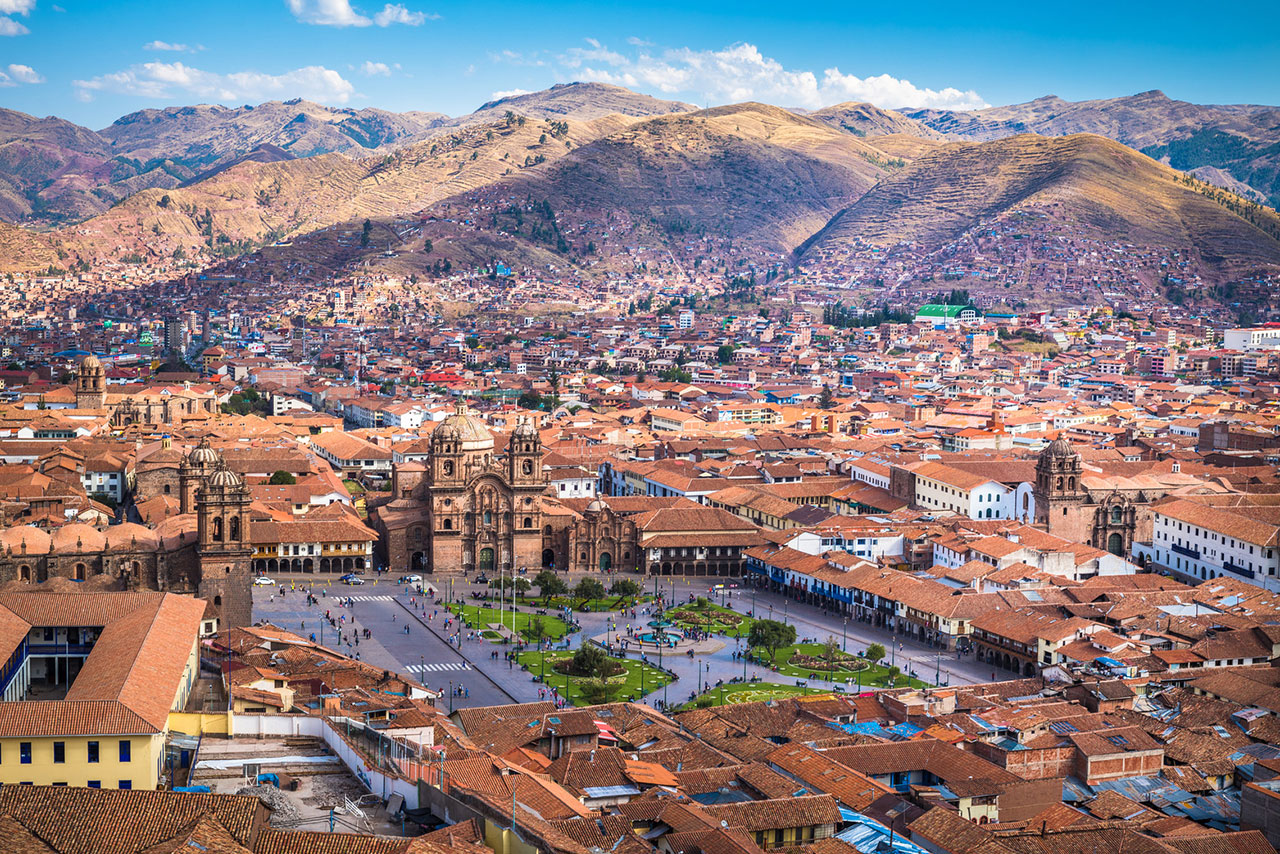
There is talk about the Sun God himself named Inti, he occupied these lands, others talk about the great warrior son of the Sun God Manco Capac and his sister, but the exact date of its creation as a settlement is unknown, they dominated several cultures. others assimilated them forming a vast territory around 600.000 square kilometers, its capital being Cuzco.
For the inhabitants of Cuzco, their conception was dual and therefore their lands were divided into highlands called Hanan and lowlands with the name of Hurin, from the name of Manco Capac originated a certain class of social status among the caciques showing with the Over the years great relevance, due to the research carried out to them belongs the ceramics and the Killke culture, they called themselves Incas.
He demonstrated the Inca empire, an excellent social and political organization that allowed them, thanks to their advances in construction, to found an organized city, Cuzco, like the ancient ones observed in Rome, something that is surprising about their engineering knowledge even though they did not know the wheel.
Starting with the mythical Manco Capac, a series of rulers were established in Cuzco who were from the deity of the Sun, they were so divinized by their own culture that they, the rulers of the Inca empire, could not touch the ground, they only left their great fortress in the religious activities of their people, to be revered by them.
The navel of the world, for the Inca empire was the city of Cuzco, in its Quechua dialect, according to the investigations that have been carried out, it is considered that between the years 1200 and 1400 the bases for the political, social and religious organization of this city were formed. pre-Columbian civilization, according to these same studies there is talk of the reign of an Inca named Pachacútec between the years 1438 and 1463.
The consolidation of this vast empire begins, subduing the surrounding tribes that opposed it when diplomacy did not achieve the desired effects, their creativity was such that the city was created by their engineers in the shape of a puma that could be seen in the distance. over the mountains that make up the valley of Cuzco.
Demonstrating a great urbanism and opulence as found in its heyday by the Spanish when they conquered, in the XNUMXth century; In addition to the construction of the city of Cuzco, these great engineers demonstrated advances in agriculture, renewed the community and built excellent public and religious buildings that are worthy of admiration and respect for their culture.
For which Cuzco demonstrated its social development as a large urban nucleus, which was delimited by two rivers Saphi and Tullumallo, with which they moved to other urban settlements for commercial exchange since they did not know the currency.
In this city of Cuzco was the palace.
In addition to a series of large buildings for religious temples and the houses of the nobles, beyond it was the urbanization and the popular groups that were the base for agriculture and animal husbandry.
Cuzco was the capital of the Inca empire and for the Spanish, one of the most important cities in the viceroyalty of Peru, in colonial times under the order of the Spanish Crown, a large number of religious temples, castles and various squares were built. with predominance of baroque and neoclassical art.
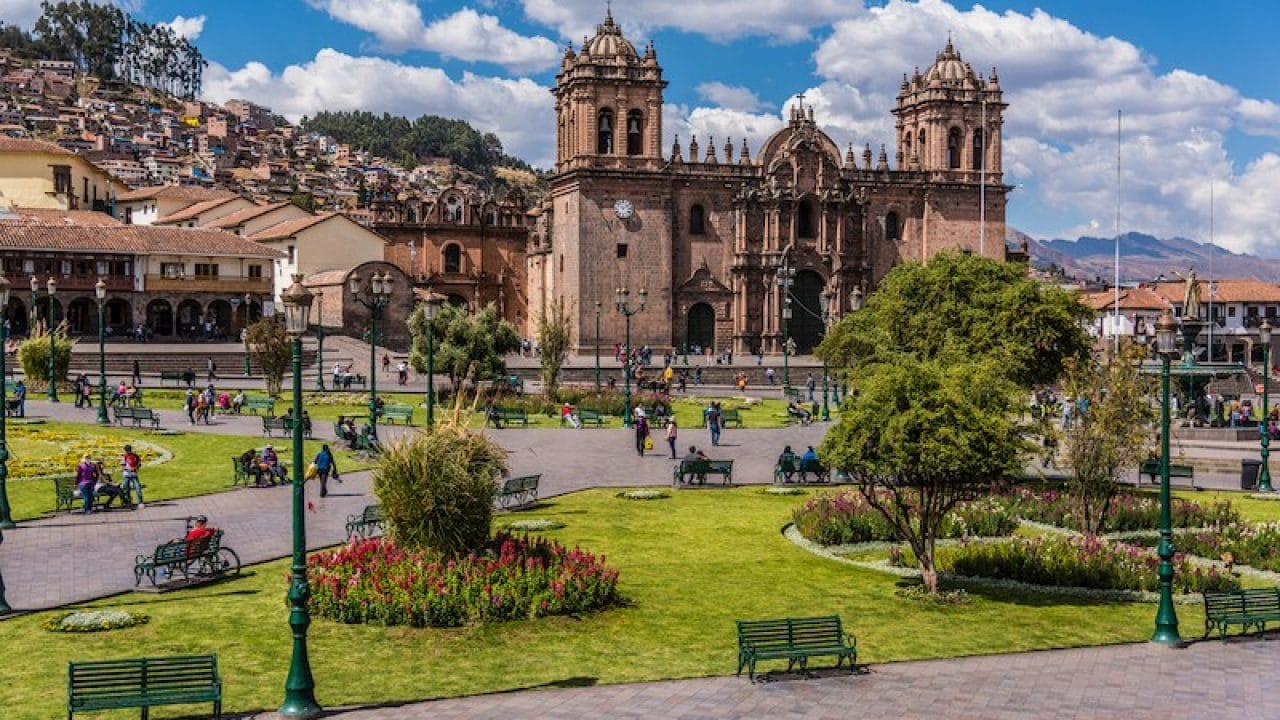
Making the city of Cuzco striking, in 1972, it was recognized as a National Historical Monument and in 1983, a World Heritage Site by UNESCO.
Foundation of Cuzco and the time of the Inca empire
Thanks to the narrations of the natives, which were compiled by Gómez Suárez de Figueroa, of Hispanic-Inca descent, who was born in Peru on April 12, 1539, he used the pseudonym Inca Garcilaso de la Vega.
He commented that Manco Cápac was the first governor and who founded Cuzco in the company of mother Ocilo, who was his sister and first wife, children of the Sun, moved to the vicinity of Lake Titicaca.
By order of their father, the Sun God, they threw a golden javelin with great force, where that instrument fell, they founded their town of Cuzco, as related by this mestizo writer, in the year 1615, being known from that moment by Spain, thanks to this writing:
"... the first stop they made in this valley, said the Inca, was on the hill called Huanacauri, at noon of this city, there they tried to drive the gold bar into the ground, which very easily sank in the first blow. that they found her, that they did not see her anymore…”
“… Then our Inca said to his sister and wife: In this valley our father the Sun commands that we stop and make our seat and dwelling. summon and attract these people to teach them and do the good that our father the Sun sends us…”

According to information obtained thanks to the investigations carried out in archeology and anthropology, the occupation of Cuzco has been studied, it is concluded that the reign of Tiahuanaco declines, producing the transfer of the town from what is now Bolivia.
This population oscillates around 500 men, residing in the valley of the Huatanay river, coming to found Cuzco on the banks of another river named Saphy; the exact date is not known, about when Cuzco was founded, but it is presumed according to the investigations carried out that it was inhabited for 3000 years.
One of the chroniclers of the Spanish Crown, Pedro Sarmiento de Gamboa, upon arriving in the American continent, was in charge of the study of Cuzco, according to his research that Cuzco was already populated by the Guayas, Antasayas and Sahuasiray ethnic groups.
As the oldest inhabitants of this city, he also mentioned other ethnic groups such as Copalimaytas, Culunchimas and Alcavistas as more recent cultures; He also spoke about the Ayarmacas, who were the oldest inhabitants and the Incas used diplomacy, for which the marriage union between these civilizations allowed the splendor of Cuzco.
Becoming the most imposing city of the Inca Empire for being its capital, this produced so much boom that it was the cultural and religious center of this great empire, when diplomacy could not be carried out, the confrontation was made to dominate with the force of its army. .
This happened thanks to its ruler Pachacútec, he turned Cuzco into a cultural apogee, he came to power in 1438, both Pachacútec and his son Túpac Yupanqui were in charge for fifty years of organizing and uniting the various ethnic groups, arriving to govern around ten million inhabitants, throughout the Inca empire.
This empire was so great that the power of Cuzco reached as far as Quito, today the capital of Ecuador, integrating all the inhabitants in a width of 4500 kilometers in the great chain of mountains of the Andes; it is more it is thought that the form of the design of Cuzco is the work of Pachacútec.
Well, when observing from the Cuzco mountains, it has the shape of a puma, thanks to the work of its engineers, since it is to be noted that they did not have technology, but they showed great skill in their constructions, which demonstrates their great intellectual development.
The puma is the sacred animal of the Andean peoples, for which Cuzco was from afar the silhouette of a great puma, being the central square named Haucaypata in the chest of the feline and in the head of the animal was located a hill of the great ceremonial fortress called Sacsayhuamán, were very organized in the structure of the city.
Cuzco was the seat of power and organization, three thousand three hundred and fifty meters above sea level, which was demonstrated in its architecture since the city joined four paths to integrate its own, which were the four territories in which they were It divided the territory of Cuzco, known as Tahuantinsuyo, which means the four of them together.

This territory was so large that it reached Ecuador and some areas of what is now Chile, Argentina, Bolivia and Colombia, since in the Urubamba Valley you can also see huge Inca constructions, very similar to those of the city of Cuzco.
The Spanish conquest and the viceregal era
When the Spaniards arrived in the territory of Cuzco, they decided to take this city for the Spanish Crown, they managed to catch the Inca Atahualpa who was the last ruler of the Inca empire, in the town of Cajamarca, from there they went to Cuzco, according to the chronicles that are presented They date from the year 1533, in the month of February, with this conquest the splendor of Cuzco ends.
The Spanish during the conquest could not modify the environment of the city of Cuzco because the resistant constructions of the Incas made it impossible to destroy them to manufacture new buildings, so they decided to form their buildings in the existing Inca constructions, which can currently be seen in the Convent of Santo Domingo which was built on the Temple of the Sun.
The majestic palace of Viracocha made by the Incas became the seat of the Cathedral of Cuzco, that is why Inca urbanism can be represented today to the thousands of tourists who visit the city of Cuzco.
Several researchers disagree about the characters who carried out such a crusade, the Inca Garcilaso de la Vega y López de Gómara speaks of Hernando de Soto and Pedro del Barco, while Pedro Pizarro and Rubén Vargas Ugarte speak of other characters, this first group of Spaniards They returned from Cuzco to the town of Cajamarca, between the months of May and June in the year 1533.
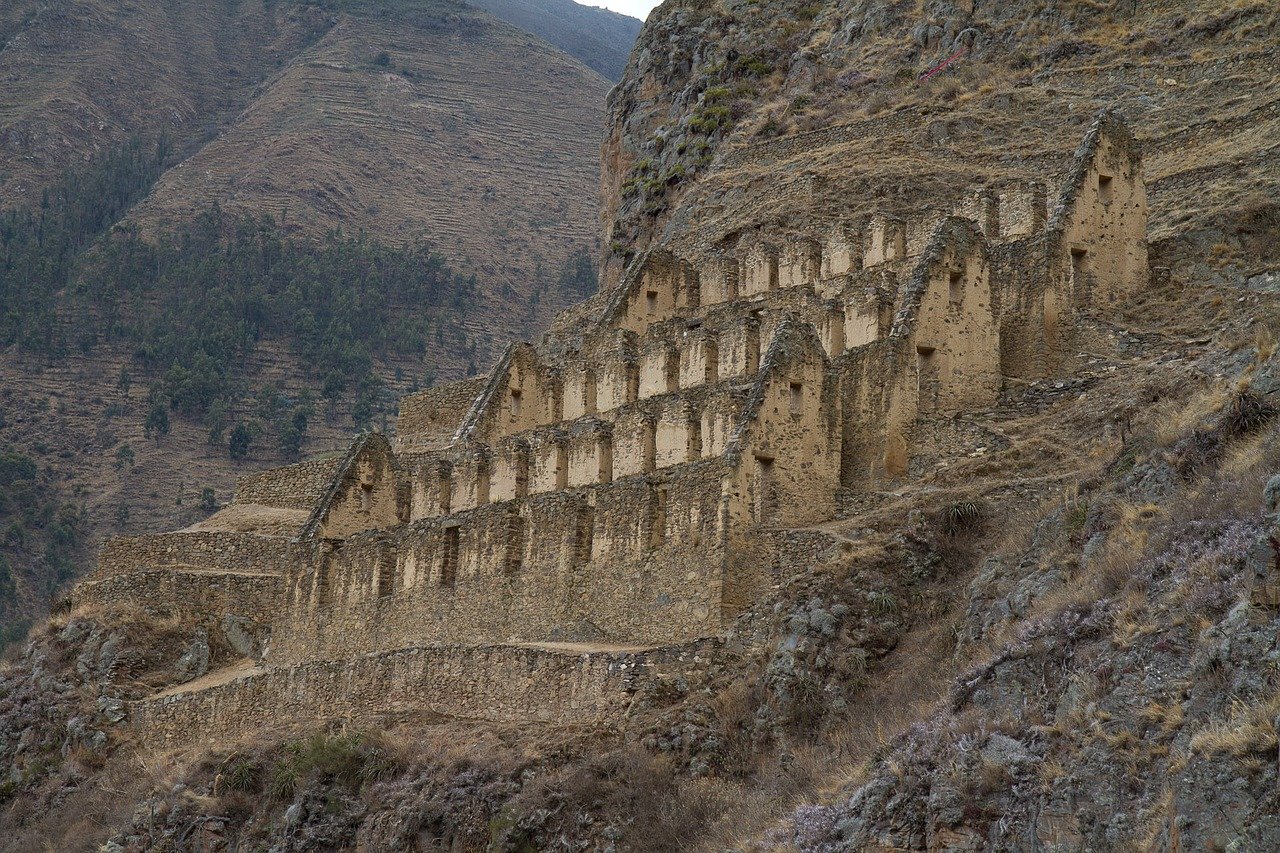
The Spaniards brought with them enormous amounts of gold and silver, as the chronicler named Vargas Ugarte writes, again the conquerors made another expedition to the city of Cuzco, on August 11, 1533.
The fearsome Francisco Pizarro in the company of another indigenous named Túpac Hualpa with the intention that he take over the position of Atahualpa, but he only lived three months because he died of poison, and the warrior named Calcuchimac, who was one of the three main generals of Atahualpa.
The Manco Inca, better known as Manco Cápac II, also accompanied Francisco Pizarro, helped Pizarro and his men to enter Cuzco, on November 15, 1533, Manco Cápac II was crowned, as Inca, as recounted in the chronicle of one of the researchers Rubén Vargas Ugarte.
After a month, they had managed to get hold of all the precious metals in Cuzco and the Spanish melted down all the beautiful works that had created the Inca empire; this large quantity of molten gold that they outraged from Cuzco was much greater than that found in Cajamarca, oscillating according to the chronicle at 700.113.880 pesos.
Already on March 23, 1534, Francisco Pizarro managed to found the Spanish city in the city of Cuzco, in the Plaza de Armas, is currently the modern city of Cuzco, which was bordered by the sovereigns of the Inca empire.
On the large site facing north Francisco Pizarro gave the order to build the religious temple, he placed the motto: The very noble and great city of Cuzco, eighty-eight Spaniards, were the first residents of Cuzco, now a Spanish city, at The next day the city council was created, being the ordinary mayors Pedro de Candia and Beltrán de Castro, in addition to eight aldermen.
In the city of Cuzco, now Spanish, the mayors and aldermen had to be changed a year, in the month of October of the year 1534 they made the distribution of the lots or territories of Cuzco among the Spanish conquerors, there were still clashes by members of the empire Inca.
After two years in 1536, Manco Inca regrets helping the Spanish and starts fighting against the conquerors and organizes the dynasty known as the Incas of Vilcabamba, who were the four monarchs who could be successors of Atahualpa and They resist the conquerors, but the clashes took place until the year 1572.
There were thirty-six years of confrontation until Túpac Amaru I was defeated during the battles, they caught him and to show the other natives that they could not beat the Spanish they beheaded him in a public act.
Cuzco became a major center of trade and cultural exchange in the Andes Mountains, there were also routes to Lima and the mining environment of what was known as Upper Peru.
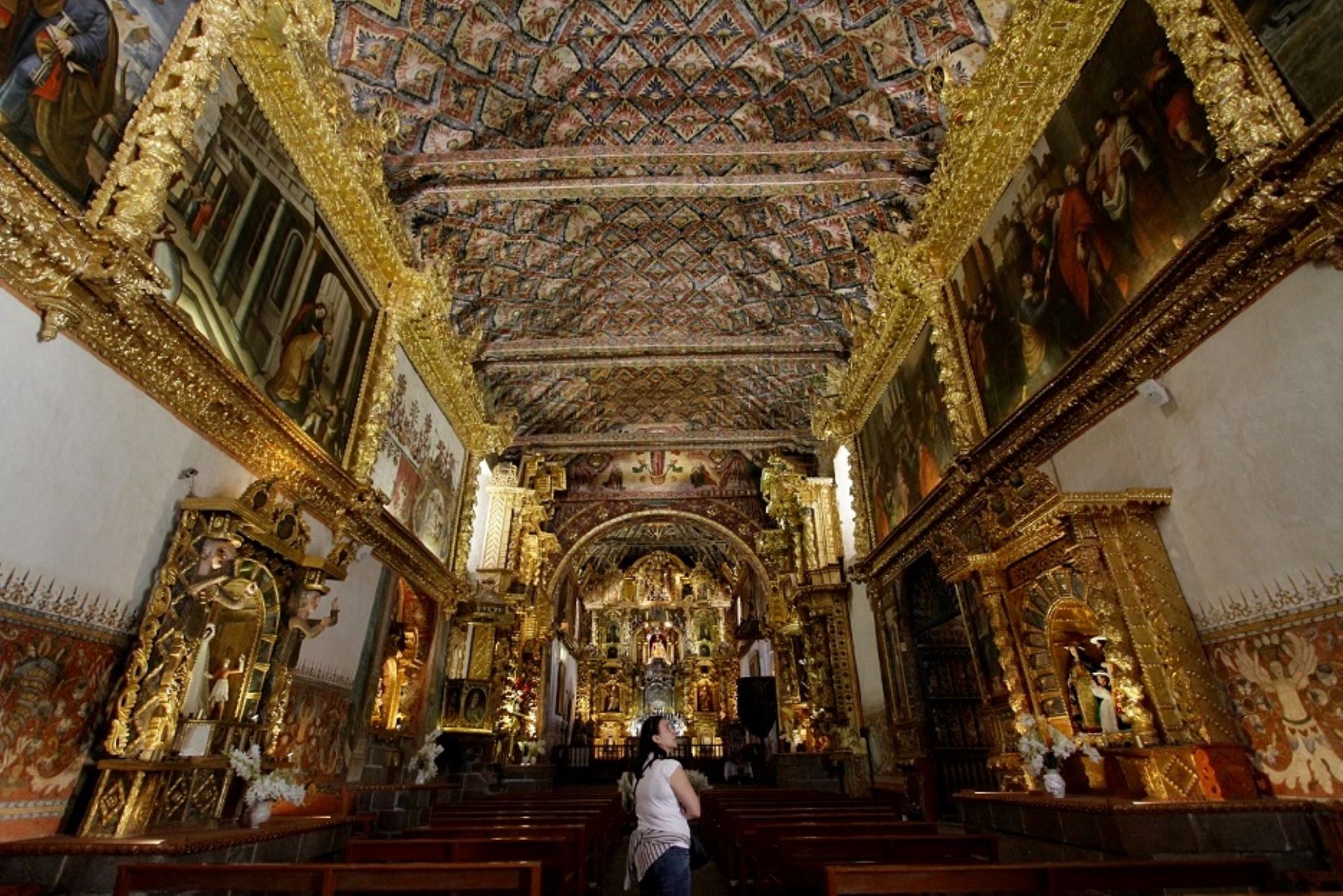
More for the Spaniards it is more comfortable for the port to place the city of Lima as the capital of the viceroyalty, but Cuzco belonged to the administration department of the viceroyalty of the Spanish Crown, according to the investigations the population of Cuzco was respected by being the majority natives from the Inca high society, for which they were granted some privileges.
Likewise, part of the Spaniards were eradicated in Cuzco, in addition, the cultural and economic miscegenation that is currently observed in the city today began, in terms of textile manufacturing, of course at that time it was pre-industrial, now they use technology, to to reach Río de la Plata, they had to pass through Cuzco.
Already dominated by the Spanish, during the XVI and XXVII centuries, Cuzco begins to lose its Inca beauty, to begin the construction of religious temples of baroque order, as is the case of the Cathedral, which was built between the years 1560 and 1664 , other churches such as La Compañía in 1576, La Merced, which was built at the beginning of the XNUMXth century.
The temple of San Francisco, between 1572 and 1662, the Spanish were also in charge of the construction of various hospital centers such as the colonial hospitals of San Bartolomé, which later changed their name to Hospital and Convent of San Juan de Dios , to attend exclusively to the Spaniards and the Hospital de Naturales for the natives of Cuzco.
Multiple changes and buildings were made in the structure of the city of Cuzco, with regard to the architecture of civil order centers, such as the Almirante Palace, the house of the Marquises of San Lorenzo de Valle Umbroso and the Archbishop's Palace. .

In terms of education, the Spanish decided to start several schools in the city of Cuzco, such as the San Francisco de Borja school, to teach the children of the Inca chiefs, in addition to the University of San Ignacio de Loyola, the Seminary of San Antonio de Abad, in addition to another University with the name of San Antonio Abad.
After the clashes with the Incas, it was now the telluric movements that destroyed the city of Cuzco, now Spanish, which is why the development of urbanity seemed so slow, the most recent earthquake was evidenced in the year 1650.
From there, the importance of the Inca empire is observed in its constructions based on terraces to avoid the destruction of its constructions because they were anti-seismic, as has been currently demonstrated thanks to the investigations carried out on the structures built by the engineers of the Inca empire.
For the Spaniards, their fear in that earthquake was such that they became devotees of the Lord of the Earthquakes, who since that date is annually venerated in procession, although it is important to limit.
That the inhabitants of Cuzco had the custom of dancing for their mummies who were the ancient governors of their great civilization, because they continued with their customs but instead of dancing for their mummies, the Spaniards made the saints of the Catholic tradition dance.
They happened in Spain, Bourbon reforms where Felipe de Borbón, takes the reign of the Spanish nation, while this was happening in Europe in the year 1780, in Cuzco there is a movement initiated by the indigenous people at the head was the chief named José Gabriel Condorcanqui , called Tupac Amaru II.
This happens thanks to the influence of the enlightened ideas Túpac Amaru II, rises up against the power of the Spaniards, from the city of Cuzco, these confrontations spread throughout the Peruvian nation, this uprising could only last a few months because between the battles that took place in Cuzco.
The cacique José Gabriel, better known as Túpac Amaru II, is caught and so that the town does not dare to repeat the confrontations, the execution is ordered in the company of his entire family in the Plaza de Armas of Cuzco.
Today you can see in Cuzco, on one side of the Compañía de Jesús Church, a chapel that was used at that time as a cell to keep that cacique who today is a Hero of Peru.
This event was communicated immediately, throughout the Andes mountain range, what happened in Cuzco and it was the cry of emancipation of the natives for which many Spaniards of the high aristocracy, fearful of a confrontation with a greater number of indigenous people, decided move with their families to the Peruvian capital and the city of Arequipa.

This caused the commercial decline of the city of Cuzco as visitors avoided approaching the area for fear of some repression by the natives, in the nineteenth century, again in the year 1814, there was another confrontation of the natives against the administration of the Spanish Crown, better known as the Cuzco Rebellion.
This confrontation was represented by the Angulo brothers and a brigadier named Mateo Pumacahua, who was a mestizo from Cuzco, they began an uprising like the one that was beginning in Buenos Aires to achieve independence from Peru from Cuzco, but the same It could not be possible because the Viceroy José De Abascal culminated with this uprising in eleven months.
Cuzco and the Republican era
As can be seen in the history of Peru, it obtained its independence in the year 1821 and the city of Cuzco maintains its relevance in the territorial political organization of the country, on the territory that the Intendancy occupied, occupying even the territory of the Amazon, since it has not yet been had bordered the Brazilian nation, Cuzco is the capital of all that department according to the order of José de San Martín.
This happened on April 26, 1822, but the territory was still owned by Spaniards loyal to the Spanish crown, the battle of Ayacucho was won and General Simón Bolívar emerged victorious, for which Viceroy La Serna had to capitulate, the December 22, 1824 recognizes the capitulation of Ayacucho, being prefect of Cuzco General Agustín Gamarra, on December 24, of that same year.
The year 1825 begins and the city of Cuzco receives with emotion the visit of General Simón Bolívar, thanks to the respect that the Peruvian nation had for the distinguished Venezuelan liberator Simón Bolívar, the schools of Sciences and Arts were inaugurated, they concentrated the previous schools San Francisco de Borja, the San Bernardo, the University of San Antonio de Abad.
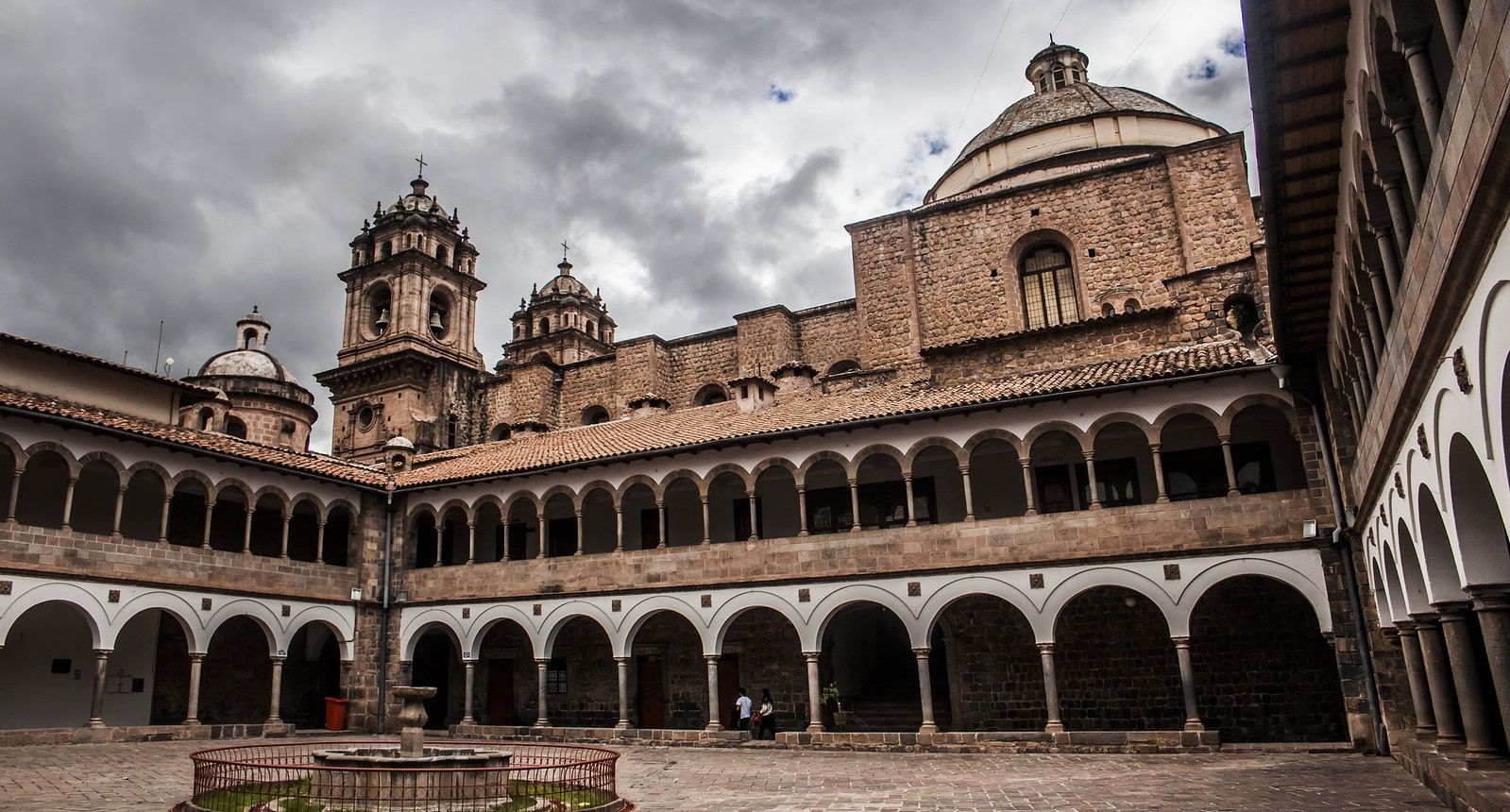
During this visit, the first school for the education of Peruvian women, called Colegio Las Educandas, was also created in Cuzco. Later, due to the Peru-Bolivia Confederation, Cuzco was one of the bastions of this Republic that lasted very little, only The Arch of Santa Clara remained of that symbolism.
Cuzco falls again into an economic, social and demographic debacle, since many of its inhabitants lost their lives due to the constant battles of Independence and endemic diseases that killed many inhabitants of this town, it was also very close to being invaded by the Republic of Bolivia in the year 1842; the XNUMXth century continued without sorrow or glory for the city of Cuzco.
The threat of plagues decimated the lives of the inhabitants of Cuzco such as smallpox in 1885, it won the prize of being the cleanest city in America to date, which continued to destroy the imperial city of the Incas, the industrial revolution came to Peru at the hands of merchants from the United Kingdom, further impoverishing the natives of Cuzco who could not compete with them.
For the year 1872, the first of six brewing industries that would later be known as Cervecería del Sur was installed in the town of Cuzco, the rise of Cuzco was due to these liquor companies, ending the 1894th century, causing the war Peruvian civilian in the year XNUMX.
Confrontations were carried out within the same city of Cusco, where the caceristas lost, for the year 1909, the youth revolution was carried out, a Cuzco school was started, in what was the Scientific Center of Cuzco in the year 1897.
Cuzco in the XNUMXth century
At the beginning of the 1908th century, Cuzco increased its urban demographic development, for the year 13, specifically on September XNUMX, the railway to Cuzco was inaugurated, giving the city new opportunities for interaction with the people who arrived at the port, although The transfer of the railway was very slow due to the situation of the mountains of the Andes.
In view of the increase in the population in Cuzco, the rivers such as the Tullumayu, Huatanay and Saphy had to be channeled, new urban remodeling was carried out in the city, such as Choquechaka and Saphy streets and Tullumayo and Sol avenues, the which allowed greater access to the neighborhoods surrounding the center of the city, urban planning extended to the southern and southeastern areas.
In the year 1911, something surprising happens in Cuzco, of many expeditions that were made from Cuzco to the surroundings of the Andes mountain range, Hiram Bingham, explores the surroundings and finds the ruins of a huge construction of Inca creation, called Machu Pichu.
This finding has raised the tourism industry in the city of Cuzco, as it is currently known, because every day of the year, many tourists always go to visit this city, although currently due to the Covid-19 pandemic, everything has been paralyzed to prevent and prevent the spread of this virus.
Which has decimated the lives of thousands of people, at a time when technology and research are extremely important and they have not yet discovered how to paralyze this virus, it is more people who have been paralyzed, to stay in their homes and take care of your health, so as not to continue spreading this terrible virus.
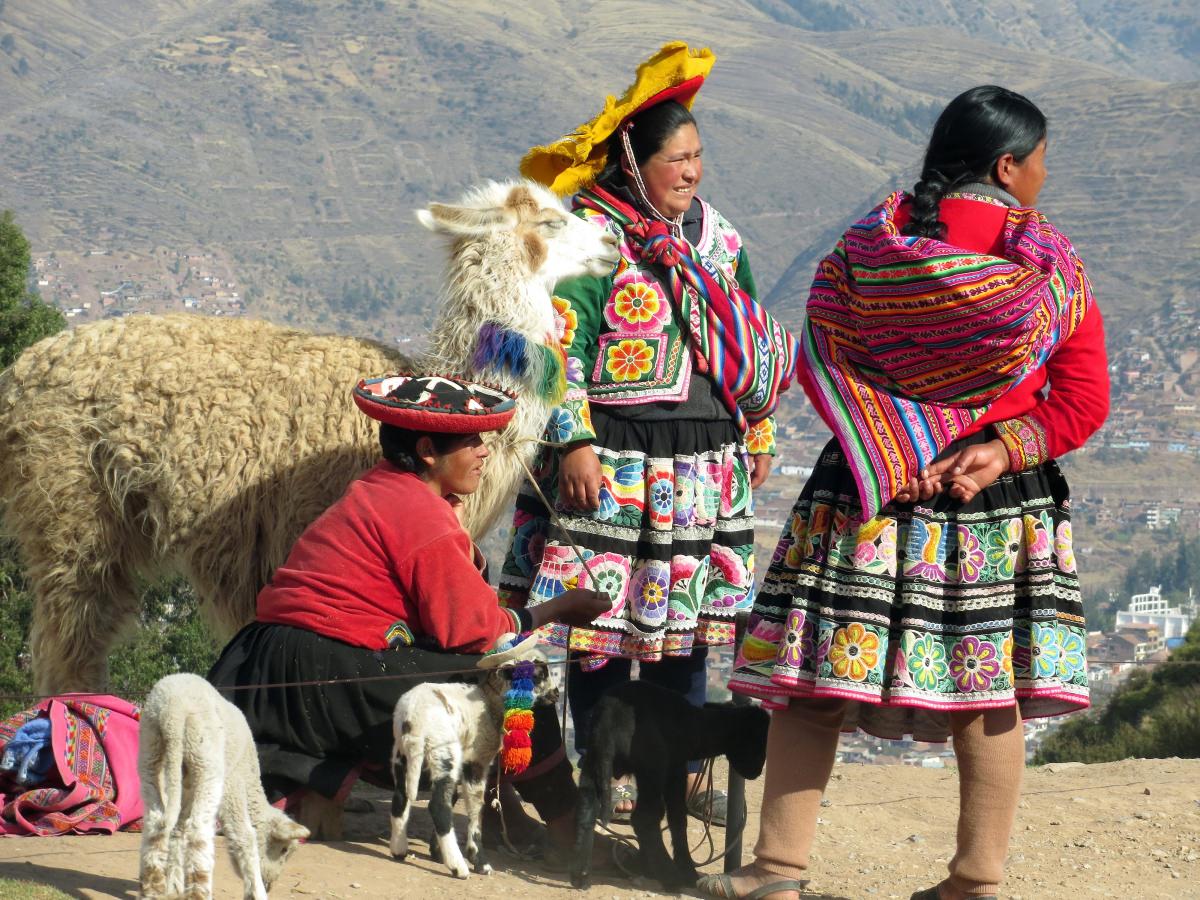
In the year 1913, a private company was founded in the city of Cuzco, so that this city would have the opportunity to enjoy the good service of electricity, for which the pertinent studies were made to create the hydroelectric power plant, in the Corimarca region.
The pertinent tests were carried out and in the year 1914, the city of Cuzco began to enjoy the electrical energy service in each of its homes, by a private capital, which knew very well that the tourist profits were going to pay for the development of electric energy, the tourist companies started with greater comfort thanks to the electric service.
In the year 1921, the first flight from Lima to the City of Cuzco was made by an aviator of Italian origin named Enrique Rolandi, which was great news for tourism entrepreneurs who held the corresponding meetings for the purchase of an airplane. , which would be owned by the city of Cuzco and this pilot Rolandi would be the technical advisor for this small commercial airline industry.
This first plane owned by the city of Cuzco, was a biplane model, fighter manufactured by the SVA company, this air transport was named Cuzco, on September 1, 1925, the pilot from Cuzco Alejandro Velasco Astete He died at the age of twenty-eight.
He was the first Peruvian to fly over the Andes, he arrived in the city of Lima after flying from Cuzco, but on September 25 of that same year he suffered an accident where the aviator lost his life and the plane was destroyed.

This happened when he tried to land in the town of Puno, when he came from flying from the city of Cuzco, in 1930, the prefect of Cuzco named José Vargas, who was General, was in charge of the expropriation of some land located in the town. of Chachacomayoc and another called La Pólvora.
Making in that place the first airport with a dirt runway in the city of Cuzco which was active until 1967; This initial service of passengers and cargo planes between the city of Lima and Cuzco began in 1937.
The fleet was immediately supplied with DC-3 and DC-4 planes from the aviation company named Faucett, three years passed and the flight service became normal thanks to the multitude of visitors who came to observe the city of Machu Pichu.
Currently this space belongs to a park called Zonal, the Adolfo Guevara Velasco National Hospital is also located in that space in what is known as the district of Wanchaq and the Casa de la Juventud Closed Coliseum.
In 1964, the Alejandro Velasco Astete International Airport was inaugurated, in the name of the first Peruvian who had flown over the Andes mountain range, which Cuzco has been served since then and is the second airport with the highest passenger traffic in Peru. , thanks to the tourist company.
It is important to emphasize that since 1944, June 24 is the Day of Cuzco, for which they carry out a scenography that attracts the attention of tourist clients, for which they carry it out in various emblematic places such as the Plaza de Armas, the Ruins of Sacsayhuamán or the Inti Raymi, and they also create the Hymn to Cuzco.
Six years pass, in the year 1950, and an earthquake occurs in the city of Cuzco, of magnitude 6.8 on the Richter scale, this caused damage to the urbanization of the city, specifically in the colonial temples and convents, for which respective reports from the Peruvian nation and UNESCO who sent the researcher George Kubler of American origin.
Who was in charge of carrying out the pertinent study for the management and coordination of the restructuring of the buildings, the Peruvian government in its eagerness to collaborate with the reconstruction of Cuzco, created a Law Number 11551, in which it exposed the public interest of Cuzco , obviously by the tourist company and placed a tax on the consumption of cigarettes to support the reconstruction of the buildings.
In the year 1952, the reconstruction of the city of Cuzco is carried out, which allowed the modernization of the urbanity of the environment, allowing a greater boom in the tourist industry, in the year 1952, the number of 6092 tourists is counted.
Which were increasing year after year, in 1975, the number of tourists was 176.625, which was much higher than the population of the city of Cuzco, which was studied for 174.000 inhabitants.

For the year 1972, the Peruvian nation through the Ministry of Education, made a Supreme Resolution declaring the Cultural Heritage of the Nation to the Monumental Zone of Cuzco, it was necessary to expand the city between 1974 and 1991, while this was happening in the VII session of the UNESCO World Heritage Committee, in the city of Florence in the Italian nation.
Cuzco is declared a Cultural Heritage of Humanity in the week of December 05 to 09, 1983, but on April 05, 1986, another telluric movement occurs that destroys part of the monumental area of the city of Cuzco.
In 1990, Mayor Daniel Estrada Pérez carried out a program to beautify the monuments, squares and fountains during his administration; getting Cuzco the title of Historical Capital of Peru.
Which is located in the Magna Carta of Peru, since 1993, the shield of Cuzco was also elaborated, leaving aside the Colonial Blason to integrate the Sun of Echenique, as the new shield of the city of Cuzco, also he tried to change the name to the Qosqo language, but it was not lasting, leaving Cuzco.
Geography and Climate of the city of Cuzco
This city is located in a valley which is formed by the Huatanay River and the hills that protect it, the climate of Cuzco is mostly dry and temperate, being located near the equator only has two seasons; the dry one between the months of April and October, during this season the sunny days are felt with opposite nights where it is very cold and the temperature drops to 13°C.
The other season is rainy and occurs between the months of November to March, the temperature ranges between 12°C, on sunny days it can rise to 20°C, but the wind from the mountains is cold.
Cuzco Architectural Heritage
Thanks to the large number of Inca constructions that can be seen in the city of Cuzco, which belong to the pre-Columbian age, in 1972, they declared it Cultural Patrimony of the Nation, this appears in a supreme resolution with the number 2900-72- ED, and also in order to protect the city of Cuzco, the VII session of the UNESCO World Heritage Committee was held in 1983.
Deciding to declare this city Cultural Heritage of Humanity, for which the main sites of tourist interest in the city of Cuzco are the following:
The neighborhood of San Blas, here the artisans reside, their workshops and craft shops are located, when visiting this city you can see that it is one of the most attractive places in Cuzco, its streets are steep and at the same time narrow, you can see large mansions that were built by the Spaniards, on the bases of the Inca constructions.
It has a beautiful square and is the oldest parish in the city of Cuzco, which was founded in 1563, is characterized by its pulpit made of wood, which was carved in colonial times, in the Cuzco language the Barrio de San Blas is called Toqocachi which means in the Castilian language the salt hole.
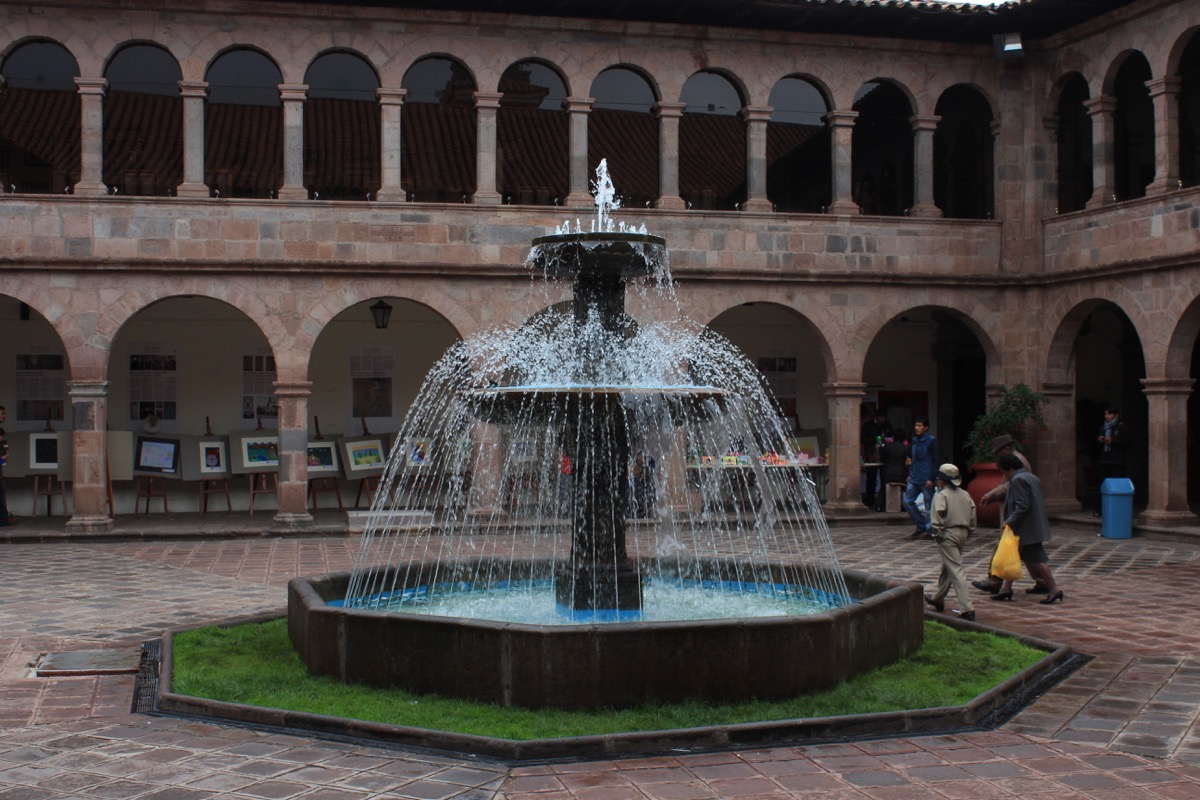
Hatun Rumiyuq Street, is the most visited by the thousands of tourists, who visit the city of Cuzco daily, this Quechua word means in Spanish, From the largest rock, the Inca Roca Palace was located there, on it, the Archbishop's Palace was built .
This street leads from the Plaza de Armas to the Barrio de San Blas, for which in its path you can see the stone of the twelve angles in the Inca wall, during this journey you can buy countless things thanks to the artisans who They have become very creative.
The Convent and Church of Nuestra Señora de La Merced, this beautiful temple was built in the year 1536, its first construction was destroyed by the earthquake of the year 1650, the pertinent reconstruction was carried out and it concluded in the year 1675. In this building, the baroque style is observed.
Specifically in the choir stalls, in the paintings and wood carvings, here you can see a shelter in gold and precious stones that weighs about 22 kilos and its height of 130 centimeters, which is surprising and belongs to the colonial period or rather Inca, since the Spanish snatched the gold that was in the temple of the Sun God.
The Cathedral of Cuzco, the first cathedral of Cuzco was the Church of the Triumph that was built on the construction of the Palace of Viracocha Inca, which was built in 1539, but currently became the auxiliary chapel of this enormous cathedral, for which this huge cathedral was built on top of the Suntur Wasi, the house of the Condor, between 1560 and 1664.
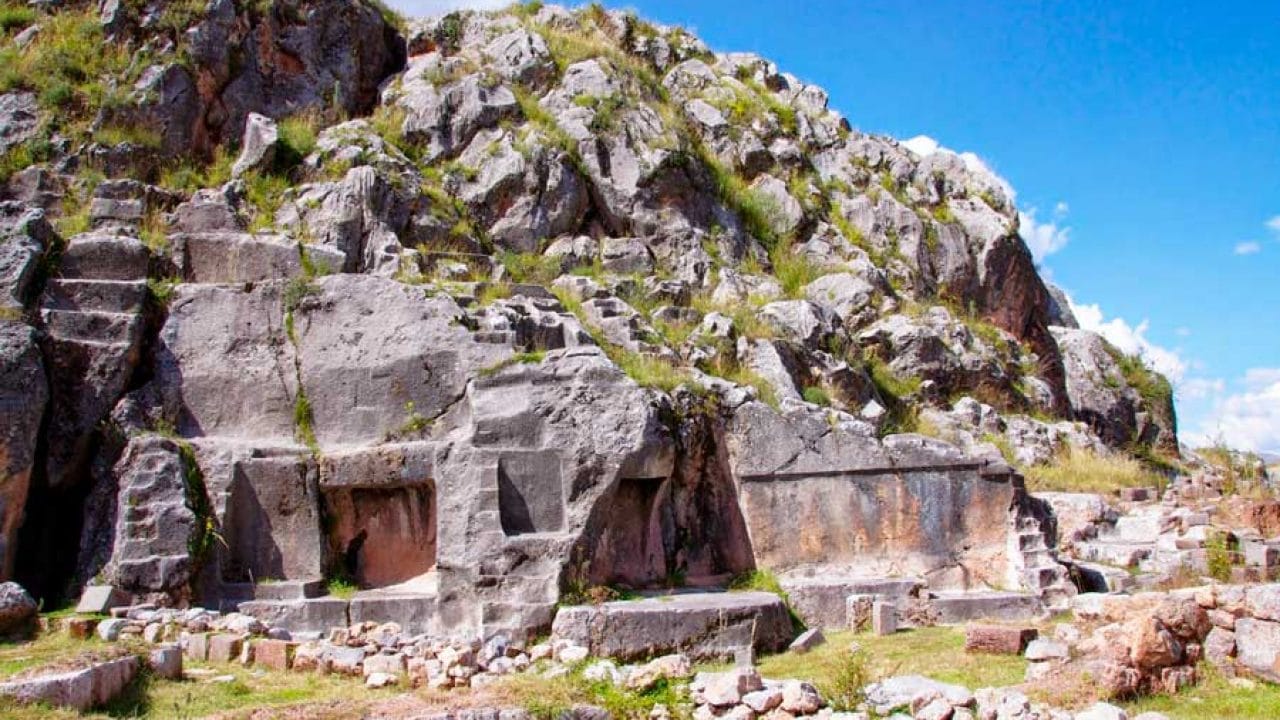
Stone was used as the main element, which was extracted from other Inca buildings that the Spanish used as a quarry, in addition to granite blocks that had a red color that they brought from an Inca complex called Sacsayhuaman.
Here the Spanish architects worked the Renaissance plan, inside the religious temple the Baroque intermingled with the Gothic is observed, it has in its possession the most beautiful goldsmith of the colonial era.
It also stands out for its impressive religious altars in polished carved wood, in this temple you can see excellent works of the Cusco School of Painting that adorn its walls, it is also the headquarters of the Archdiocese of Cuzco.
Plaza de Armas, was considered the place of joy by the Inca empire, it was so wide that what is now known as the Plaza del Regocijo belonged to it, as well as another plaza named San Francisco.
Thanks to history, this square has been the protagonist of various events in history, among them is the first proclamation of the independence of the Peruvian nation, which was made by brothers with the surname Ángulo made in 1814.
This Plaza de Armas, located in the city of Cuzco, also witnessed the beheading of José Gabriel Condorcanqui, called Túpac Amaru II, whom Peruvian history considers to be the first leader of the indigenous resistance, when confronting the Bourbon reforms of the King Philip.
During the colonization the Spaniards built a colorful stone arcade with indigenous hand, which still exists, here are two religious temples, the old cathedral of Cuzco and the temple of the Society of Jesus, both located on constructions made by the Incas and in the central part of the square a pool and on it the effigy of an Inca.
Today this Plaza de Armas is the scene of various cultural celebrations and civic actions in the city of Cuzco, among them the Inti Raymi Festival of the Sun God, which is celebrated every June 24, for the enjoy the thousands of tourists who are going to observe, in addition to the Corpus Christi festivities.
Which has a variable date according to the calendar of the Catholic religion, it can be carried out between the months of April, May or June, where the procession of various Catholic saints is carried out, in all regional dances are observed and therefore every Sunday they perform hoisting the flag of the city of Cuzco and that of the Peruvian nation.
The Santurantikuy is also held in Cuzco, which is the purchase of saints, on December 24, being a commercial fair referring to the Christian faith at Christmas, since every day there are tourists visiting the city, they must carry out various parties and commercial fairs. since the residents of the site live from the tourist economy.

Church of the Society of Jesus; this religious temple was built on top of the Inca building, the Amarucancha Palace, which was dedicated to the deity of the snake, here you can see one of the best examples of the baroque style, in colonial times, you can see the carved stone made by the Incas .
Currently this religious temple contains two chapels, the Lourdes chapel and the San Ignacio de Loyola Oratory, on its walls you can see a large number of colonial canvases from the Cuzco School of Painting in the city of Cuzco.
Coricancha and Convent of Santo Domingo, was the most important temple of the Inca empire dedicated to the Sun God, in Quechua its name is Qorikancha, it was known as the site of gold, since its walls were adorned with gold sheets that the Incas made.
In this Inca building, the construction of the Convent of Santo Domingo was elaborated through a Renaissance style, it contains a baroque tower, which is the tallest of all the buildings in the city of Cuzco, countless Inca walls can be seen inside and in the a monolith in the center of it, and as in the other temples, a large number of canvases belonging to the Cuzco School of Painting.
The Inca Urbanism in the city of Cuzco
Another of the qualities that is presented in this city of Cuzco is the incredible tenacity of the Inca engineers when carrying out the urban planning of the city despite the topography of the site, they in their culture believed in various religious deities and in honor of them they had temples built.
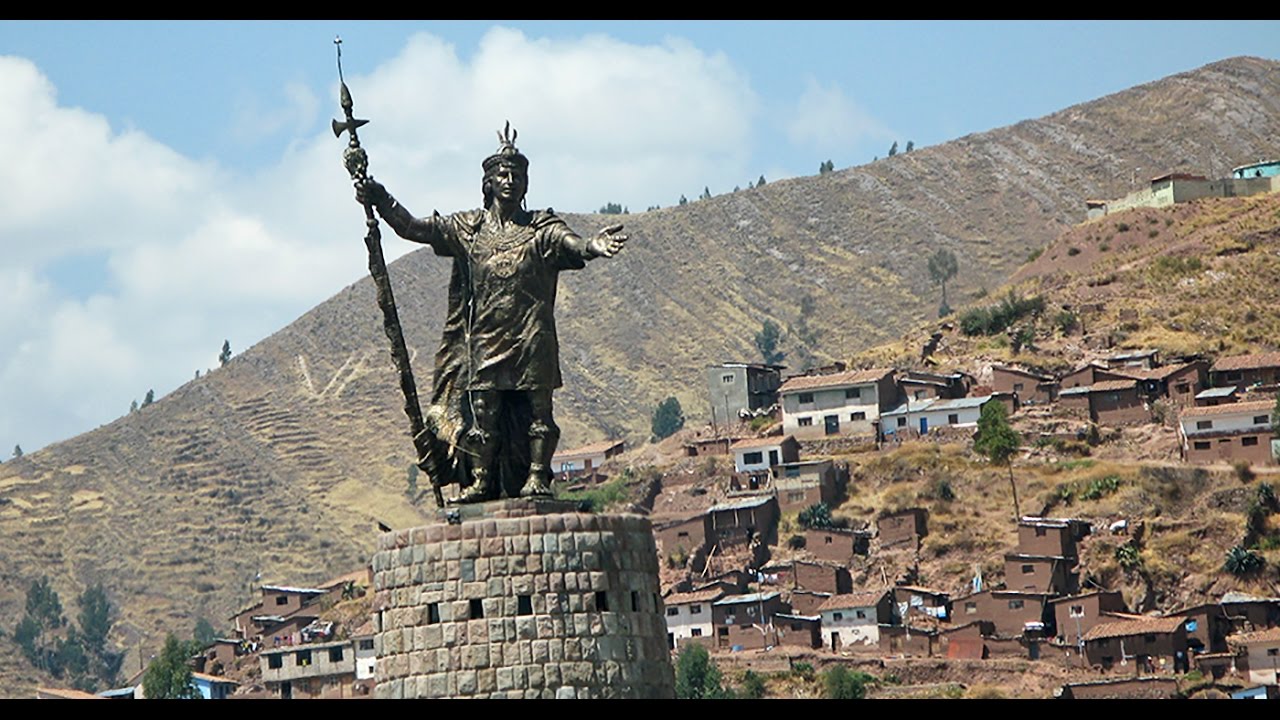
Among them was the Sun God Inti, Pachamama, the Goddess of Fertility, Huiracocha, who was the Inca number eight, claimed to have had a dream with the God Wiracocha, among others, who were personified as people.
This way of representing the deities was what made the representation of the city of Cuzco in the form of a puma, which is a symbol of great power that refers to the power of the God who had created the city of Cuzco.
All the streets and urban planning were built in the direction of the Sun, in addition to interacting with the natural landscape, since they did not destroy nature but took advantage of nature to integrate into the place and adapt it to the design, great intelligence demonstrated by the Inca engineers.
The Symbols of the Inca Empire, like every city in the world, Cuzco has its own flag, its shield and its anthem, even though it is a state that belongs to the Peruvian nation, in the month of June the use of these symbols is observed because On the 24th the Inca Festival of Inti Raymi is commemorated, it is also the day of the city.
Regarding the coat of arms, the emblem of the Sun of Echenique is currently being used, for thirty years, as the emblem of the coat of arms of the city of Cuzco, since its qualities represent the Inca empire.
The Population in the City of Cuzco
In the year 1533, when the Spaniards arrived, the city of Cuzco had a population that ranged between 40.000 inhabitants, plus the sum of the neighboring towns reached around 200.000 inhabitants in this place, but when the conquest was carried out, the population decreased considerably. .
Despite this, according to demographic research in the 1780th century, Cuzco was one of the most populated cities on the American continent, and in the Peruvian nation it was the second most populated city, in XNUMX, the rebellion of Túpac Amaru II and the rebellion of Túpac Catarí.
They were causes for part of the population to seek to emigrate to the Peruvian capital Lima, to avoid dying in the pro-independence battles, but in the last decades of the XNUMXth century, the inhabitants who had remained in the city of Cuzco had died in the various battles that they faced making the demonstrative case in the XNUMXth century.
When the proclamation of the Peruvian Republic is made, in the year 1825, it can be evidenced according to history, that when receiving General Simón Bolívar, where the Peruvian Congress boasted and this distinguished Venezuelan was awarded medals for having won the battles of Junin and Ayacucho.
Just the city of Cuzco, had the number of forty thousand inhabitants, and after two decades, there were only twenty thousand inhabitants left, because there was an isolation of this city.
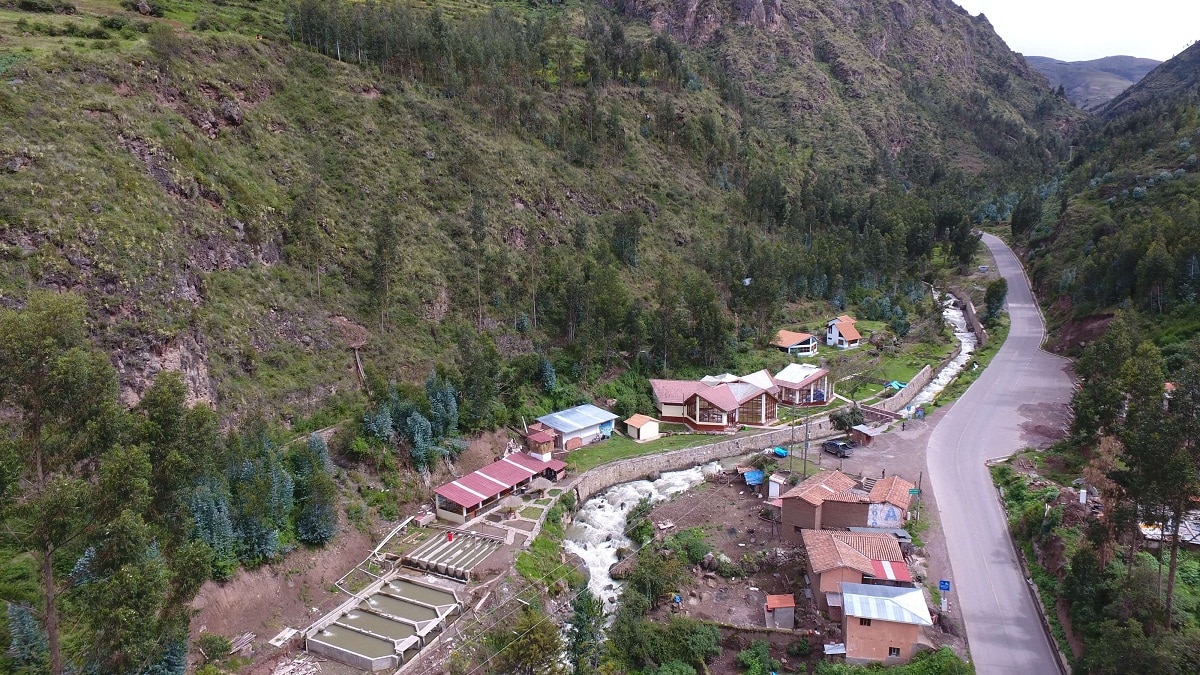
Without electricity or services accessible to its inhabitants, young people preferred to try their luck in the capital of Lima, by the year 1910, only the number of 13500 inhabitants was registered in the city of Cuzco and the majority were mestizo population.
But when the city of Machu Picchu was found, everything changed for these inhabitants, for the year 2017 it is said that the population in Cuzco was 437.538 inhabitants thanks to the tourism industry.
Population evolution, according to the National Institute of Statistics and Informatics, the city of Cuzco has five metropolitan municipalities, for the year 2017, the census showed that the population oscillated between 437.538 inhabitants and within the city of Cuzco 114.630 inhabitants are specifically residing in this main metropolitan municipality.
Cuzco as a Religious Center
In the Inca empire, the city of Cuzco was the center where the divinity of the Sun was worshipped, for which there was a great temple called Coricancha, which means enclosure of gold, there were also the Aqllawasi nearby, which were the houses that he had selected. the sun god
They were also in this city, the seat of the various funerary clans of all the emperors who had ruled the Inca empire, called Panakas, because after they died they were mummified and still had a place of respect in their religious culture, there was also the royal palace where the ruler lived who was a deity, a Living God.

In addition to the religious clergy who were represented by the Willka umu who was the chief priest. In this city of Cuzco, the main imperial ceremonies were held, as is the case of Inti Raymi, better known as the festival of the Sun God, which still continues to be presented in the Plaza de Armas.
In the presence of thousands of tourists and also on the esplanade of Sacsayhuamán, although these tourist festivities are currently held, Cuzco is the archbishop's seat of the Peruvian nation.
Culture in the city of Cuzco
They carry out several cultural activities during the course of the year in the city of Cuzco, one of the most splendid is that of Inti Raymi, better known as the Festival of the Sun God, it was the most important ceremony according to the investigations of the Inca culture.
It can also be seen in the city of Cuzco, another festival that is celebrated on the day of the Holy Trinity, the name of this cultural activity is the Lord of Qoyllur Riti, where more than 60.000 pilgrims go en route to the mountains that are covered with snow, there the temperature fluctuates around 4°C, while they walk the ritual various fireworks are observed and the Alasitas market, this festival lasts four days.
For the month of September in the city of Cuzco, specifically on the 14th, thousands of people devoted to the saint of Huanca, make the pilgrimage to his sanctuary, people from other countries also go to make this pilgrimage, as for Holy Week, In the city of Cuzco, the celebration is held but it is dedicated to the Lord of the Earthquakes, who is the protector of the city, remembering that it has suffered several telluric movements.
In relation to Corpus Christi, the visit of fifteen saints and virgins is carried out, who are transferred by the inhabitants of the city of Cuzco, in the direction of the Cathedral in procession to pay reverence to the body of Christ, represented in the sacred host, in the Catholic tradition, which is kept in a solid gold monstrance that weighs around twenty-six kilos and is one meter and twenty centimeters high.
It is also observed at Christmas on the day of Santurantikuy, where thousands of representations of the saints are sold to the innumerable tourists who visit Cuzco, in honor of Christmas, you can see various figurines of births or mangers to place them in the family home. .
music in the city
In view of the cultural activities there is the Cuzco Symphony Orchestra, created under a Directorial resolution number 021/INC-Cuzco, since March 10, 2009, it is in charge of performing around fifty concerts a year, they are presented in the Municipal Theater of Cuzco.
As for the Qosqo Center of Native Art, it was founded in 1924, it is the folkloric institution of the city of Cuzco, it is already accepted by the government of Peru and it is also a Living Cultural Heritage of the Cuzco Region.
Economy in the City of Cuzco
In view of the large influx of tourists to the city of Cuzco, its main activity is the reception of tourism, making improvements in infrastructure and services, because thanks to them the city remains standing, they also work agriculture, such as corn and other native tubers.
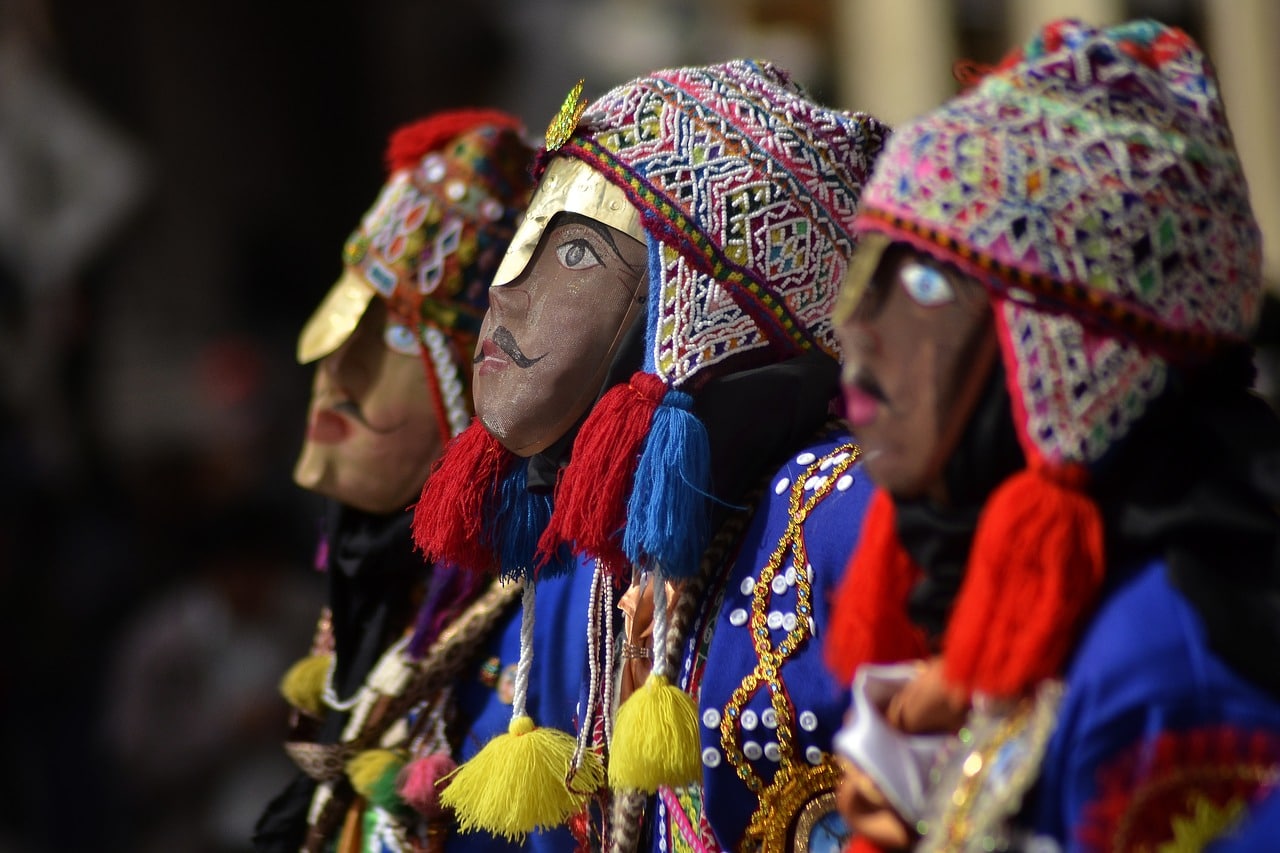
The small and medium industry is also related to tourism, such as recreational and interactive activities, food products in addition to beverages, among its strengths beer, water, soft drinks, coffee, chocolate, among others.
Commercial Bank
Obviously, because it is a place of great tourist interest, Cuzco has various banking branches so that tourists can have access to their money and, at the same time, it opens new sources of employment for the inhabitants of this great city, among the various bank branches that are found there are the following:
• Credit Bank of Peru
• BBVA Continental
• Scotia bank
•Citibank
• Interbank
• National bank
• Central Reserve Bank of Peru
• Inter-American Finance Bank
• Pichincha Bank
• Credit
• Azteca Bank
• My bank
• Bank of Commerce
• Prestaperu
• Credit card
• Piura Box
• Huancayo Box
• Keelcoop
• Cuzco Box
• Box Tacna
• Metropolitan Cove
• Financial Edyficar
• Financial Solidarity
• Bank of Materials
• Liberty Cooperative
• Santo Domingo de Guzman Cooperative
• San Pedro Cooperative
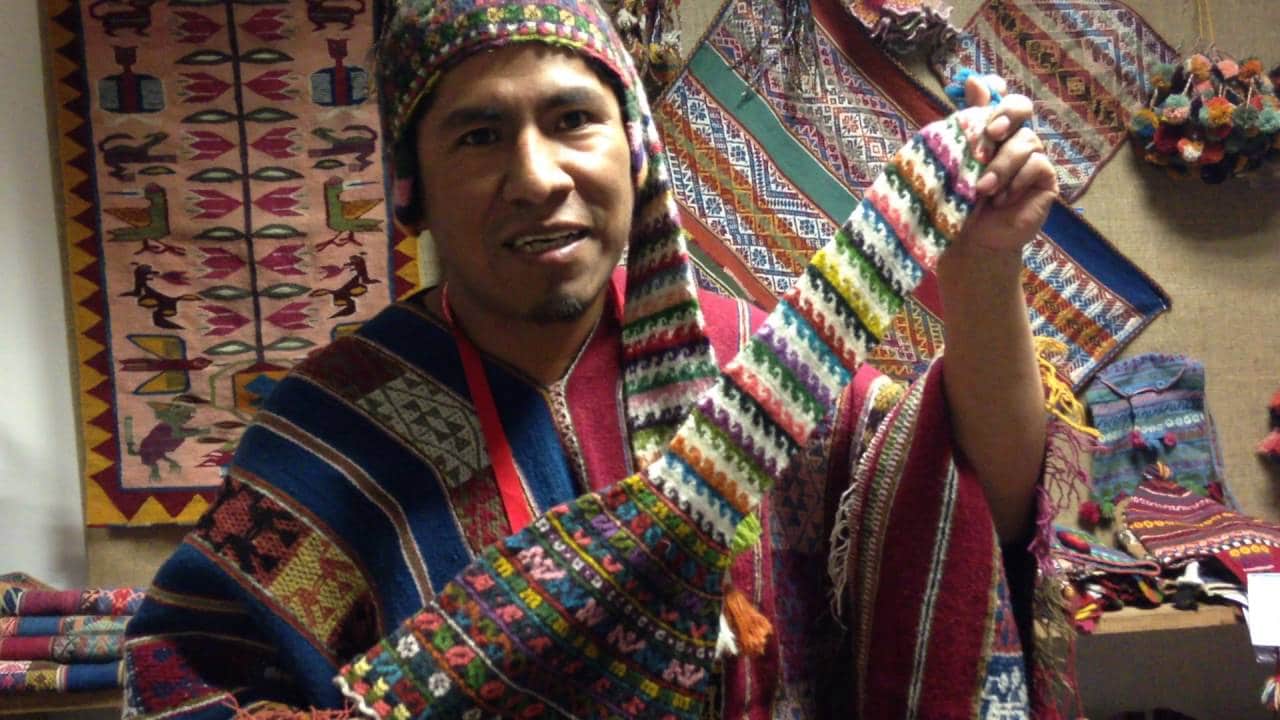
Politics in the City
Since its beginnings in the Inca empire, Cuzco has been surrounded by politics, since it was the political center of the Inca region where the first Tawantinsuyo government was given, since this city housed the elite of the Empire, from the ruler who was a living deity, their relatives, the nobles and other personages of importance.
When the Spaniards arrived, it lost some of its political boom because a city near the port, such as Lima, was more comfortable for the viceroyalty, even more so it had participation in politics, because it was the first city to have an archbishop.
It was also a strategic point for trade routes, because here the Corregimiento had its institution for tax matters, later it became the Intendancy of Cuzco and at the end of the viceroyalty before Independence in the Royal Court of Cuzco.
When the battles that gave independence to the Peruvian nation were liberated, the political role of Cuzco was imperceptible, due to its isolation, being beaten by Arequipa because it was better communicated by land, but after the archaeological discovery of Machu Picchu, the city of Cuzco was again taken into account in political aspects.
Several representatives of left-wing parties have come out of Cuzco, as is the case of Daniel Estrada Pérez. After his death, political parties have been led, such as the Peruvian Nationalist Party and another called the Broad Front for Justice, Life and Liberty, and even regional political movements.

Transport and comunication
Thanks to the daily influx of tourists to the city of Cuzco, great improvements have been made in terms of transportation and services, in order to serve very well the thousands of guests who come to learn about the legacy of the Incas, among these innovations in transportation is the Alejandro Velasco Astete International Airport.
This Cuzco airport was inaugurated on July 22, 1967, it is located between two metropolitan districts of the city of Cuzco such as Wanchaq and San Sebastián, this airport is managed by a state company named CORPAC SA
Here flights from the city of Lima are received daily, every year the Cuzco airport mobilizes 1.700.000 people, it is named after the first Peruvian pilot to fly over the Andes mountain range, in 1925, then He made an aerial presentation in the city of Puno, on September 25 of that same year, lost control of the ship and died on impact.
Thanks to this airport, a large number of people are mobilized to the city of Cuzco, due to this it is one of the airports with the best standards, its runways are paved, boarding bridges were placed, it has space to receive Boeing 757-model aircraft. 200 according to the report of the state company.
This airport receives daily flights from various cities such as Lima, Tacna, Arequipa, Iquitos, Puerto de Maldonado and Juliaca at the national level and with respect to the international sphere Bogotá, Santiago de Chile, La Paz, since 2019 from Santa Cruz de la Sierra .
Chinchero International Airport
Due to the tourist boom in the city of Cuzco, another airport is built that is outside the city, and much larger, that can receive international connections without using the Jorge Chávez International Airport, it will be located 28 kilometers from the city of Cuzco. Cuzco in the Chinchero metropolitan district.
This work will be carried out by the Kuntur Wasi Consortium, which requested the Peruvian government an amount of 264,7 million dollars and the Peruvian entity will only contribute 48% of the project, the rest will be private.
Thanks to this modern airport, it is estimated to be able to receive the number of five million tourists a year, with the possibility of expanding and assisting eight million people, the total amount of the work was scheduled at 665 million dollars.
Railway lines and highways towards Cuzco
Due to the assiduous visit of tourists to the city of Cuzco, a railway connection has been made with various cities including Arequipa, Juliaca and Puno, as regards the land route, it can be connected with cities such as Arequipa, Puno, Puerto from Maldonado, Abancay and Juliaca.
The road that joins the city of Abancay is the fastest to get to Cuzco, after having made a land trip of about twenty hours while crossing various regions of the nation such as Apurímac, Lima, Ayacucho and Ica.

There is also a rail train system that allows tourists to travel to Machu Picchu, from the city of Cuzco, on the rugged mountain road in a zigzag movement, it has a stop in the town of Poroy.
For the enjoyment of tourists, it then follows its course down to the Sacred Valley where an Inca archaeological monument is located, continues its way along the Urubamba River and from there its final destination Machu Picchu.
The aspect of Health in the city of Cuzco
The great boom in tourists and because Cuzco is an administrative capital with an economic boom in the Peruvian region, it has an excellent environment in terms of health sciences, both public and private, in terms of existing public ones in Cusco, are the following:
• Regional hospital
• Antonio Lorraine Hospital
• Adolfo Guevara Velazco Hospital
• Metropolitan Polyclinic
• San Sebastian Polyclinic
• Santiago Polyclinic
• La Recolecta Polyclinic
Education in the city of Cuzco
The City of Cuzco has to its credit two great institutions dating back to colonial times, such as the Colegio San Francisco de Borja, located one block from the Plaza de Armas, dedicated to the education of the children of the caciques, and the Seminary of San Antonio Abad, founded in 1598, which was for religious, these institutions were administered at that time by the Society of Jesus.

In the 1825th century, two universities were founded in Cuzco, San Ignacio de Loyola, which closed after expelling the Jesuits, and San Antonio de Abad, which still exists. In XNUMX, the distinguished general Simón Bolívar founded the National College in Cuzco. of Sciences and Arts, which for many years was a great example in education.
Today the city has educational centers at all levels from initial education to university education, among the most prominent are religious schools such as San Antonio de Abad, San Francisco de Asís, La Merced, Salesiano , LaSalle and Santa Ana.
With regard to the study houses, there are several, the following being in the city of Cuzco, for the training of its inhabitants, and various language centers can also be found:
• National University of San Antonio Abad of Cuzco
• Andean University of Cuzco
• Alas Peruanas University
• Austral Peruvian University of Cuzco
• Technological University of the Andes
• San Ignacio de Loyola University
• Cesar Vallejo University
• National University of Fine Arts "Diego Quispe Tito"
• TELESUP Private University
Language Centers
• Quechua Language School
• Royal Spanish Academy
• UNSAAC Language Center
• UAC Language Center
• Peruvian North American Cultural Institute of Cuzco
• Italian Cultural Center
• French alliance
Cinema in the City of Cuzco
This is held in the city of Cuzco, annually under the name of FENACO, which is the International Short Film Festival, it is held in the month of November, starting in 2004, initially it was a national event in the short film format with the limit thirty minutes long, with the collaboration of international exhibitions.
But such was the rise of it among filmmakers, producers and distributors from various countries that it itself became international, currently hosting more than thirty-seven countries, making around 354 short films in competition.
Gastronomy in the City of Cuzco
They are the various typical dishes of Cuzco, the product of miscegenation and the fusion of their pre-Inca, Inca, colonial and modern ancestors, which has allowed a great union of flavors typical of Cuzco.
The sport
During the 2004 Copa América, the city of Cuzco had the opportunity to host a match between Colombia and Uruguay, which is why it is understood that the favorite sport of the inhabitants of Cuzco is soccer, in this city there are currently three sports teams, the first of which is Cienciano, which belongs to the First Division.
Proving in 2003 to be the champion of the South American Cup, in 2004, champion of the Recopa Sudamericana, being the only team of the Peruvian nation that has managed to obtain awards in the international sports field, another team from the city of Cuzco is Deportivo Garcilaso, which has participated in the Peru Cup, is followed by the Cuzco Fútbol Club, Cal was founded in 2009 and also plays in the First Division of the Peruvian nation since 2012, winning the Peru Cup in the year 2011.

Regarding the sports infrastructure, there are several soccer stadiums in the city of Cuzco, divided among its districts, we start with the district of Wanchaq, there are the Inca Garcilaso de la Vega Stadium, the Closed Coliseum "House of Youth ”, the Wanchaq Zonal Park, two swimming pools, the first in Wanchaq and the second in Season, the Marianito Ferro Park and the Uriel García Coliseum.
In the vicinity of the city of Cuzco is the International Tennis and Shooting Club, the UNSAAC Stadium, the Qoricancha Basketball Center, the Umanchata Park and the Garcilaso College Stadium.
The San Sebastián Zonal Park and the Cachimayo Park are located in the San Sebastián district, and the Huancaro stadium is located in the Santiago district.
Titles that have been granted to the city of Cuzco.
Titles that have been conferred on the city of Cuzco
In view of the Inca archeology in the city of Cuzco, it has received various honorary titles, which it postulates with great pride, being the following:
• First City and First Vote of all the Cities and Towns of New Castile, granted in the city of Madrid by Royal Certificate of Carlos V, on April 24, 1540.
• The very Insigne, very Noble, Loyal and Faithful city of Cuzco, the most important and head of the kingdoms of Peru, granted in the city of Madrid by Royal Certificate of Carlos V, on July 19, 1540
• Archaeological Capital of America, awarded by the XXV International Congress of Americanists, which was held in the city of La Plata, Argentina, in 1933, it was supported by the Congress of the Republic of Peru through Law number 7688 of date January 23, 1933
• Cultural Heritage of the World, was awarded by the Seventh Convention of Mayors of the Great Cities of the World, which met in Milan, Italy on April 19, 1978.
• Cultural Heritage of Humanity, awarded by UNESCO, in Paris, France on December 09, 1983
• Cultural Heritage of the Nation, granted under Law number 23765 dated December 30, 1983, and the same is called in the article of this Law, the city of Cuzco, Tourist Capital of Peru.
• Historic Capital of Peru, awarded by the Magna Carta of the Peruvian nation in article number 49 dated 1999
• Historical Capital of Latin America, awarded by the Latin American Congress of Councilors and Councillors, in the city of Cuzco, in November 2001.
• American Capital of Culture, awarded by the American Capital of Culture Organization in 2007
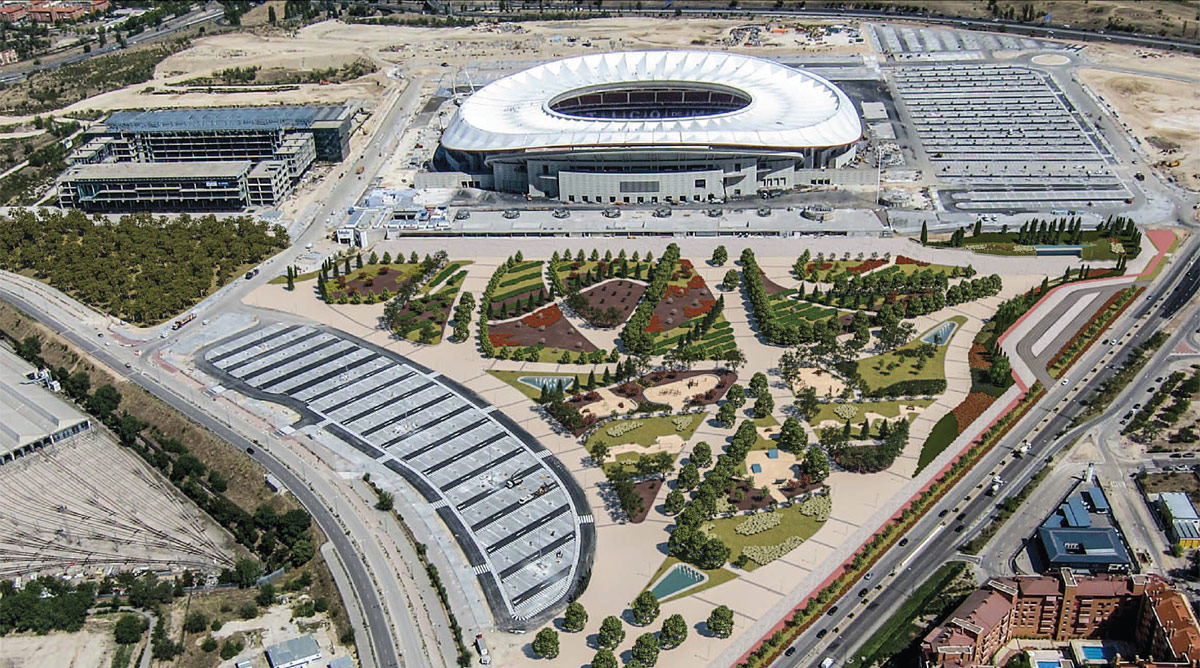
Brotherhood agreements with the city of Cuscoo
At the beginning of the eighties, the city of Cuzco, through the Provincial Municipality of Cuzco, has made various brotherhood agreements with twenty-one cities, thanks to this, it is united by links of historical order, tradition and culture, the cities Sisters of Cuzco are the following:
• La Paz, country Bolivia, since March 1, 1984
• Baguio, Philippines country, since March 08, 1984
• Samarkand, country of Uzbekistan, since August 04, 1986
• Mexico City, Mexico country, since June 17, 1997
• Kyoto, Japan country, since September 19, 1987
• Krakow, Poland, since November 08, 1988
• New Jersey, United States country, since November 08, 1988
• Chartres, country of France, since October 21, 19889
• Kaesong, North Korea country, since October 22, 1990
• Athens, country of Greece, since September 19, 1991
• Santa Bárbara, United States country, since August 29, 1992
• Moscow, Russia country, since June 23, 1993
• Havana, country of Cuba, since November 22, 1993
• Bethlehem, Palestinian country, since October 22, 1993
• Jerusalem, country Israel, since March 23, 1996
• Copán, country of Honduras, since April 11, 1996
• Xi'an, country of China, since June 21, 1998
• Potosí, country Bolivia, since June 22, 1998
• Cuenca, country Ecuador, since March 14, 2000
• Montevideo, country Uruguay, since July 19, 2001
• Rio de Janeiro, country Brazil, since October 10, 2003
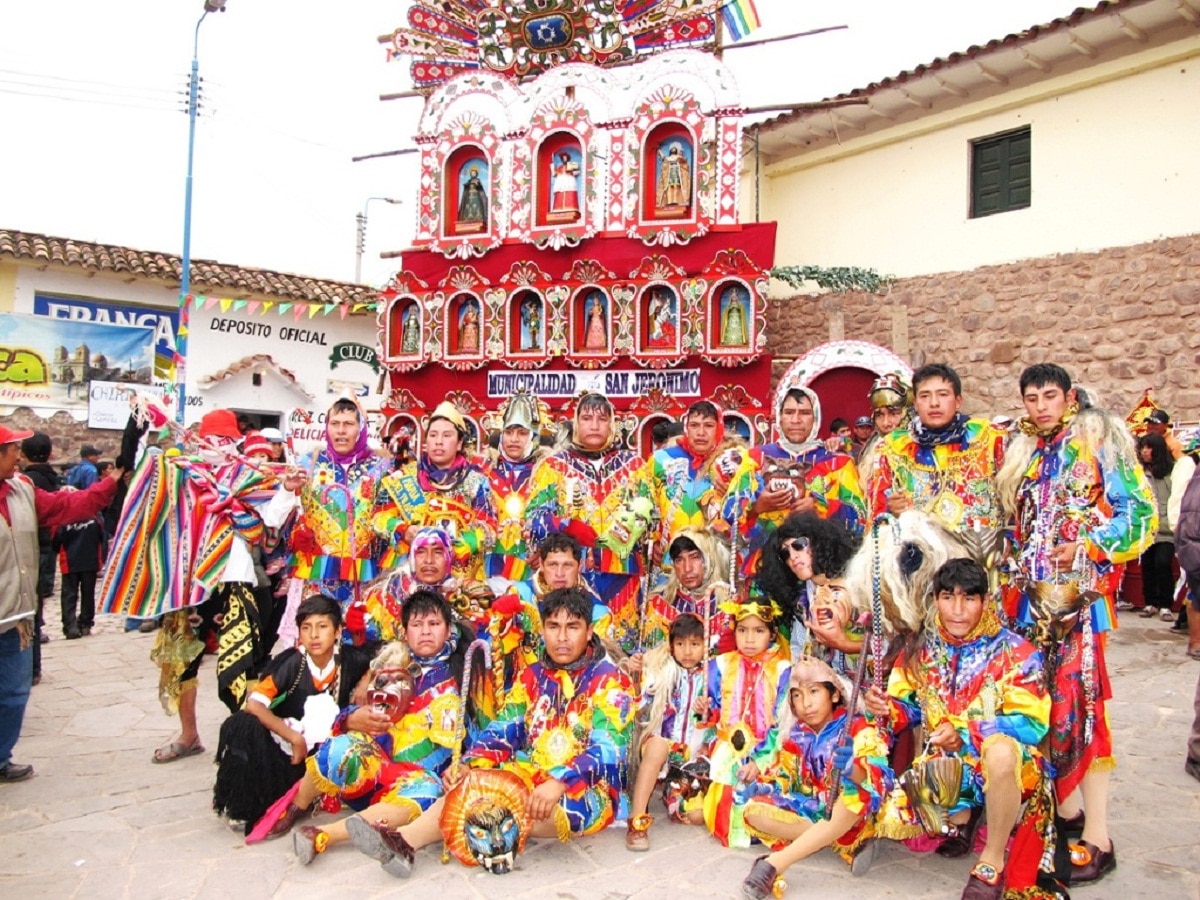
Other tourist sites in Cuzco
The city of Cuzco attracts thousands of tourists daily due to its ancient charms, we have talked about Sacsayhuaman, Coricancha and Machu Picchu, but there is also the red valley of Pitumarca, it is located south of Cuzco, everything is dyed in color red because of the minerals found in the soil, giving that peculiarity to the landscape.
It is reached from the city of Cuzco, three hours of travel to the town of Pitumarca is done by land, although it can also be by helicopter, when arriving at the town it takes two hours on foot and the place is reached, for visitors it is something splendorous.
There is another place called the three gold crosses, also in the city of Cuzco, in the town of Paucartambo, you travel by road for four hours, then take a private transport to this place, there is also Piquillacta, a pre-Inca city of Cuzco, it is presumed that around ten thousand inhabitants lived in this city, it is located south of Cuzco.
In the direction of Machu Picchu, leaving Cuzco, you can get to Ollantaytambo, which has an Inca architecture, its cobbled streets, agricultural terraces made by the magnificent Inca engineers, which were used in this nation, it would be possible to increase agricultural production in a way Surprisingly, it also has religious temples, which is today an archeology center.
The excellent thing about this great tourist investment is that Cuzco, although it is the historical capital of Peru, is at the forefront of technology, since tickets for various land transports can be purchased online, since the city of Cuzco is fully updated .
To visit Machu Picchu, it is necessary to travel from the city of Cuzco to the town of Aguas Calientes, there you can stay and the next day, thanks to the various tourist sites, you can visit the great mountain very early.
If you have found it interesting, this article on "Discover the History of Cuzco, root of the Inca Empire" I invite you to visit the following links: